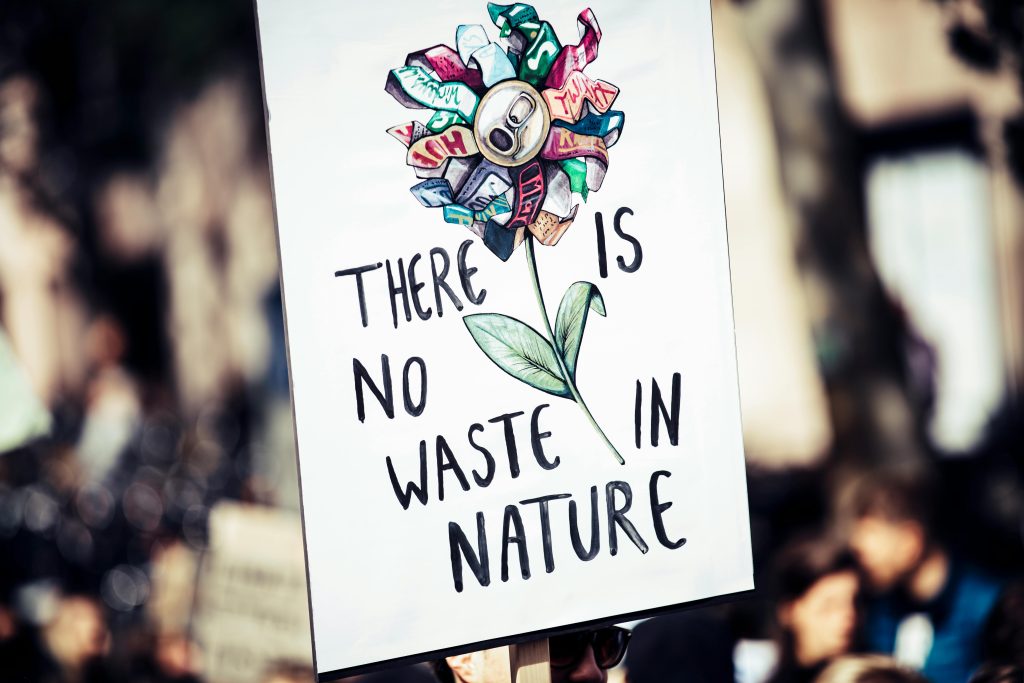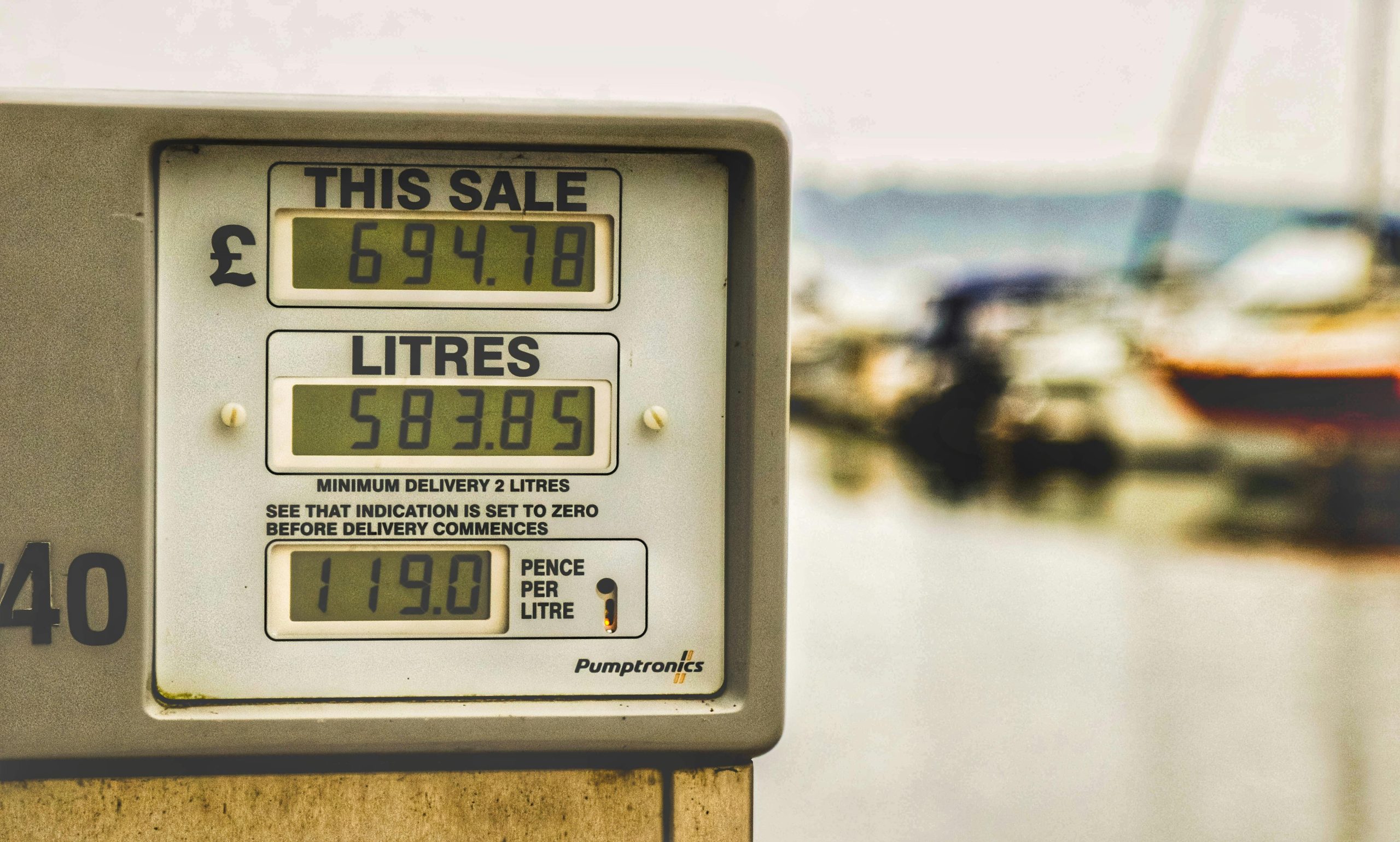
The global energy transition is experiencing a fundamental shift toward sustainable systems that prioritize resource efficiency and waste elimination in clean energy infrastructure. Unlike traditional linear energy models that follow a “take, make, dispose” approach, modern approaches create closed-loop systems where materials and components maintain their value throughout multiple lifecycles. This comprehensive guide explores how these principles are reshaping renewable power generation, storage, and distribution while providing practical steps you can take to support this transformation.
What is the Circular Economy in Clean Energy?
The circular economy represents a paradigm shift from traditional economic models, focusing on regenerative systems that eliminate waste and maximize resource utilization. In clean energy applications, these principles transform how we approach renewable technology manufacturing, deployment, and end-of-life management.
This approach extends beyond basic recycling to encompass material flow optimization, component remanufacturing, and system design that eliminates waste streams entirely. The framework considers the entire lifecycle impact of energy technologies, from raw material extraction to component recovery and reintegration into new manufacturing cycles.
What makes this approach particularly compelling for clean energy is its potential to address the resource intensity challenges facing renewable energy deployment. As global renewable capacity expands exponentially, these principles become essential for managing the material flows required to support this growth sustainably while minimizing environmental impact.
According to the International Renewable Energy Agency (IRENA), implementing comprehensive resource recovery could reduce renewable energy system costs by 15-25% by 2030. The approach also addresses a critical challenge in renewable energy scaling: the growing demand for critical materials like lithium, cobalt, and rare earth elements documented by the U.S. Geological Survey.
Solar Power Material Recovery and Reuse
Advanced Panel Recycling Technologies
Modern approaches to solar technology focus on comprehensive material recovery systems that capture value from every component. Current solar panel recycling programs operating under sustainable frameworks recover approximately 95% of semiconductor materials and 100% of glass and metal components from end-of-life panels, according to research from the National Renewable Energy Laboratory. These recovered materials re-enter manufacturing cycles, creating truly sustainable supply chains that reduce dependence on virgin resource extraction.
Leading manufacturers now embed sustainable principles directly into solar panel design processes. This includes using standardized mounting systems, separable junction boxes, and frame designs that facilitate disassembly and material recovery. Some companies have developed panels with biodegradable backing materials and recyclable encapsulants that further enhance sustainability.
The economic impact of implementing these principles in solar extends beyond waste reduction. Material recovery operations create new revenue streams for solar installers and manufacturers while reducing dependence on volatile commodity markets for virgin materials like silver, silicon, and aluminum. This approach improves long-term cost stability for solar energy systems.
For more information on solar recycling programs, visit the Solar Power Industries Association resource center.
Modular Design for Extended Lifecycles
Sustainable approaches emphasize modular solar system design that allows for component-level maintenance and upgrades rather than full system replacements. Instead of discarding entire installations when individual panels fail or become less efficient, modular systems enable targeted replacements that maximize the useful life of all components within sustainable frameworks.
This strategy proves particularly valuable for large-scale solar installations where individual panel performance varies over time. Smart management systems can identify underperforming units for refurbishment while maintaining overall system productivity, creating cascading value chains that exemplify resource efficiency principles.
The approach to solar installation also includes designing mounting systems and electrical components for easy disassembly and reuse. This comprehensive system-level thinking ensures that sustainability benefits extend beyond the solar panels themselves to encompass all system components.
Battery Storage and Resource Recovery
Lithium-Ion Battery Recycling Strategies
Battery storage represents perhaps the most critical application of sustainable principles due to the concentrated value of materials like lithium, cobalt, and nickel in these systems. Advanced battery recycling facilities operating under resource recovery frameworks now recover over 90% of these critical materials, with some operations achieving near-100% recovery rates for certain elements.
Sustainable approaches to battery storage extend beyond recycling to include battery second-life applications that maximize material value before final processing. Electric vehicle batteries that no longer meet automotive performance standards often retain 70-80% of their original capacity, making them ideal for stationary energy storage applications within resource recovery systems.
The Battery Association provides comprehensive information on battery recycling standards and best practices. Additionally, the Department of Energy maintains updated research on battery material recovery technologies.
The development of standardized battery modules and chemistries facilitates sustainable flows by enabling cross-manufacturer compatibility and simplified disassembly processes. Some battery manufacturers now design products specifically for multiple use phases within resource recovery frameworks, with modular designs that support both automotive and stationary applications.
Sustainable principles also drive innovation in battery chemistry selection, with manufacturers increasingly choosing chemistries that offer superior recyclability and material recovery potential. Lithium iron phosphate batteries, for example, align better with sustainability objectives due to their longevity characteristics and established recycling pathways.
Grid-Scale Energy Storage Integration
Large-scale energy storage installations increasingly incorporate sustainable principles through design strategies that enable component-level maintenance and material recovery. These systems use standardized battery modules, replaceable power electronics, and monitoring systems that optimize component lifecycles within resource recovery frameworks.
Storage facilities also serve as material banks, accumulating valuable elements that can be recovered when storage capacity is no longer needed. This approach transforms energy infrastructure into temporary repositories for critical materials rather than permanent material sinks, exemplifying resource management principles.
The approach to grid storage also considers the integration of different battery chemistries and ages within single installations, creating systems that can accommodate second-life batteries while maintaining performance standards. This flexibility enables broader material flows across different application sectors.
Wind Energy Resource Management
Turbine Blade Recycling Solutions
Wind turbine blades present unique sustainability challenges due to their composite fiber construction, which historically resisted traditional recycling approaches. However, innovative solutions now address these challenges through chemical recycling processes that break down composite materials into reusable fibers and resins for new manufacturing applications.
Several companies have developed mechanical recycling techniques that convert blade materials into cement additives, creating resource flows that repurpose wind energy infrastructure for construction applications. More advanced approaches focus on designing new blades with thermoplastic materials that enable complete recyclability within established systems.
The Global Wind Energy Council provides detailed reports on wind turbine recycling innovations and industry best practices.
The approach to wind turbine design increasingly emphasizes modular construction techniques that facilitate component replacement and material recovery. This includes standardized hub designs, replaceable blade sections, and power electronics that can be refurbished and reused across different turbine models within resource recovery networks.
Research into bio-based composite materials for wind turbine applications represents an emerging frontier in sustainable development, potentially enabling blade materials that can biodegrade safely at end-of-life while maintaining structural performance requirements.
Sustainable Wind Farm Development
Modern wind farm development incorporates sustainability principles from initial site planning through eventual decommissioning. This includes designing access roads and foundations for potential reuse, selecting equipment with established take-back programs, and planning material flows for efficient disassembly and transport within resource recovery logistics networks.
Sustainable approaches to wind development also consider ecosystem impacts and land use optimization strategies that create additional value streams while maintaining energy generation capacity. Some projects integrate agricultural activities or habitat restoration that demonstrates resource management thinking applied to land use optimization.
The framework for wind energy extends to considering regional material flows and processing capabilities, ensuring that decommissioned wind farm materials can be efficiently processed and reintegrated into local systems rather than requiring long-distance transport for recycling.
Actionable Strategies to Support Sustainable Clean Energy
1. Choose Products Aligned with Sustainability Principles
When selecting renewable energy systems for your home or business, prioritize manufacturers that demonstrate genuine commitment to sustainability principles through concrete actions rather than just marketing claims. Look for companies offering comprehensive take-back programs, using significant percentages of recycled materials in manufacturing, and designing products explicitly for longevity and repairability within sustainable frameworks.
Research solar panel manufacturers that participate in industry recycling consortiums and offer detailed end-of-life management services that align with best practices. Many leading companies now provide material passports that document component compositions and established recycling pathways, demonstrating their integration with sustainable systems.
For energy storage systems, select battery technologies with established second-life applications and robust recycling infrastructure that supports sustainable material flows. Consider the total cost of ownership including end-of-life value recovery when evaluating different options within sustainability frameworks.
2. Participate in Resource Recovery Programs
Many utilities and energy companies now offer resource recovery programs that enable customer participation in material recovery and reuse initiatives. These might include battery lease programs that maintain manufacturer ownership throughout product lifecycles, solar panel take-back services, or community energy storage projects that maximize asset utilization within sustainability principles.
Join local renewable energy cooperatives or community solar programs that explicitly emphasize sustainable principles in their operations and vendor selection processes. These organizations often negotiate better end-of-life management terms and can achieve economies of scale in material recovery operations that benefit all participants.
Support and participate in manufacturer take-back programs for renewable energy equipment, even when not legally required in your jurisdiction. This voluntary participation helps strengthen sustainable supply chains and demonstrates market demand for comprehensive product stewardship.
3. Advocate for Supportive Policy Implementation
Support legislation that mandates extended producer responsibility for renewable energy equipment, ensuring manufacturers remain accountable for product lifecycles within sustainable frameworks. Advocate for tax incentives that reward sustainable practices and material recovery operations rather than just initial renewable energy installation.
Engage with local planning processes to encourage sustainability considerations in renewable energy development projects. This includes supporting zoning policies that facilitate material recovery facilities and promoting building codes that enable renewable energy system upgrades and maintenance within sustainable principles.
Advocate for government procurement policies that prioritize vendors demonstrating compliance and material stewardship throughout their operations. Public sector purchasing power can significantly accelerate adoption across the renewable energy industry.
4. Support Innovation and Research
Consider investment opportunities in companies developing sustainable technologies specifically for clean energy applications, from advanced recycling processes to modular system designs that facilitate material recovery. Many emerging technologies require capital support to achieve commercial scale and widespread adoption.
Support research institutions and startups working on breakthrough solutions through crowdfunding platforms, impact investing, or direct collaboration opportunities if you represent a business or organization. University research programs focusing on sustainability applications often need industry partnerships to develop practical applications.
Participate in industry associations and professional organizations that promote sustainable principles in clean energy sectors. These groups often provide opportunities to influence standards development and best practice dissemination that accelerates adoption.
Economic Impact of Sustainable Implementation
Sustainable approaches create significant economic value through multiple mechanisms that extend far beyond simple cost reduction. Material recovery operations generate substantial revenue streams that offset traditional disposal costs while reducing raw material requirements for new manufacturing within sustainable supply chains.
Implementation could reduce renewable energy system costs by 15-25% by 2030 through improved material efficiency and extended component lifecycles. These cost reductions make renewable energy more competitive while strengthening the business case for sustainable investment.
The job creation potential extends across manufacturing, logistics, and technical services sectors. Material recovery facilities, component refurbishment operations, and sustainable design consultancies represent rapidly growing employment opportunities in the clean energy transition that require diverse skill sets and educational backgrounds.
Sustainable systems also provide enhanced energy security by reducing dependence on critical material imports and creating domestic capabilities for material processing and recovery. Countries investing in comprehensive sustainable infrastructure develop strategic advantages in the global clean energy economy while strengthening their resource independence.
Digital Technologies Enabling Success
Advanced monitoring and analytics systems increasingly enable precise tracking of material flows and component performance in sustainable systems. Internet of Things sensors provide real-time data on equipment condition, enabling predictive maintenance strategies that extend component lifecycles and optimize material flows.
Blockchain technologies facilitate transparent material provenance tracking and enable new business models for sustainable systems. Smart contracts can automate material recovery payments and coordinate complex logistics for component reuse and recycling within resource recovery networks.
Artificial intelligence optimizes system performance by predicting optimal maintenance schedules, identifying opportunities for component reuse, and coordinating material flows across multiple facilities and stakeholders. Machine learning algorithms can identify patterns in component degradation that inform design improvements.
Digital product passports enabled by these technologies provide comprehensive tracking of materials and components throughout their lifecycles, creating the transparency necessary for effective implementation. These systems enable automated decision-making about optimal material flows and recovery strategies.
Measuring Impact and Success
Effective implementation requires comprehensive metrics that track material flows, energy performance, and environmental impacts throughout system lifecycles. Key performance indicators include material recovery rates, component reuse percentages, lifecycle energy return on investment, and avoided primary material extraction within sustainable frameworks.
Assessments should consider not just direct recycling and reuse but also the broader system impacts of sustainable approaches. This includes quantifying reduced mining requirements, decreased transportation emissions, improved resource security metrics, and enhanced supply chain resilience within sustainable systems.
Life cycle assessment methodologies specifically adapted for sustainable systems help quantify the environmental benefits compared to linear alternatives. These assessments increasingly inform policy decisions and investment priorities while providing standardized metrics for performance evaluation.
The development of indicators specific to clean energy applications enables better benchmarking and continuous improvement efforts. Industry associations and standards organizations are working to establish common metrics that facilitate comparison and optimization across different technology sectors and geographic regions.
Why This Matters for Clean Energy’s Future
This approach represents more than an environmental imperative for clean energy – it’s becoming a competitive necessity as resource constraints and supply chain vulnerabilities threaten renewable energy scaling ambitions. Companies and countries that successfully implement these principles will enjoy cost advantages, supply chain resilience, and reduced regulatory risks.
The approach to clean energy also addresses growing concerns about the environmental impact of renewable energy infrastructure itself. By demonstrating that clean energy systems can operate within truly sustainable material cycles, these principles strengthen the overall environmental case for renewable energy adoption.
As implementation matures, it creates network effects that benefit all participants through improved material availability, reduced costs, and enhanced system performance. Early adopters position themselves advantageously within these emerging networks.
The framework provides a pathway for clean energy systems to achieve genuine sustainability by addressing not just operational emissions but also embodied carbon and resource consumption throughout technology lifecycles.
Ready to support sustainable clean energy? Start by choosing renewable energy products designed with these principles and educating others about their impact. Subscribe to our newsletter for more insights on sustainable implementation and clean energy solutions that create lasting environmental and economic benefits.
Related Resources from ConvertGreen
Circular economy assessments should consider not just direct recycling and reuse but also the broader system impacts of circular approaches. This includes quantifying reduced mining requirements, decreased transportation emissions, improved resource security metrics, and enhanced supply chain resilience within circular economy systems.
Life cycle assessment methodologies specifically adapted for circular economy systems help quantify the environmental benefits of circular approaches compared to linear alternatives. These assessments increasingly inform policy decisions and investment priorities while providing standardized metrics for circular economy performance evaluation.
The development of circular economy indicators specific to clean energy applications enables better benchmarking and continuous improvement efforts. Industry associations and standards organizations are working to establish common metrics that facilitate circular economy comparison and optimization across different technology sectors and geographic regions.
Why the Circular Economy Matters for Clean Energy’s Future
The circular economy represents more than an environmental imperative for clean energy – it’s becoming a competitive necessity as resource constraints and supply chain vulnerabilities threaten renewable energy scaling ambitions. Companies and countries that successfully implement circular economy principles will enjoy cost advantages, supply chain resilience, and reduced regulatory risks.
The circular economy approach to clean energy also addresses growing concerns about the environmental impact of renewable energy infrastructure itself. By demonstrating that clean energy systems can operate within truly sustainable material cycles, the circular economy strengthens the overall environmental case for renewable energy adoption.
As circular economy implementation matures, it creates network effects that benefit all participants through improved material availability, reduced costs, and enhanced system performance. Early adopters of circular economy principles in clean energy position themselves advantageously within these emerging networks.
The circular economy framework provides a pathway for clean energy systems to achieve genuine sustainability by addressing not just operational emissions but also embodied carbon and resource consumption throughout technology lifecycles.
Ready to support the circular economy in clean energy? Start by choosing renewable energy products designed with circular economy principles and educating others about their impact. Subscribe to our newsletter for more insights on circular economy implementation and sustainable energy solutions that create lasting environmental and economic benefits.






